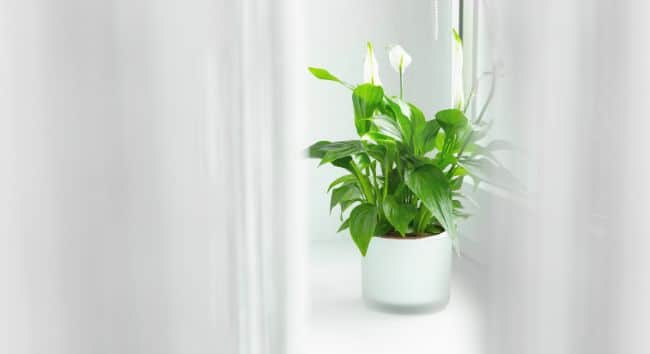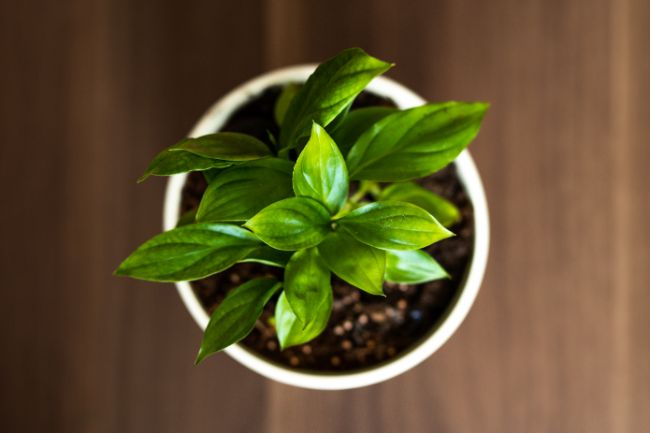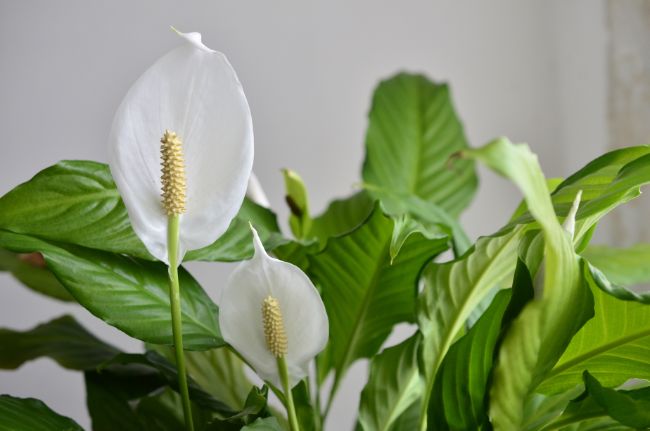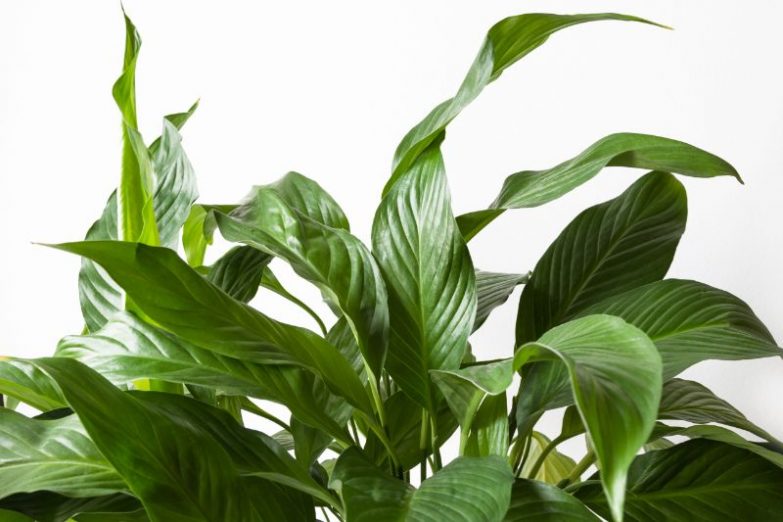The Peace Lily (spathiphyllum spp.) is an undemanding and popular houseplant. It has delightful, spear-shaped green leaves but is mainly grown for its white spathes, which many people think of as flowers. If your Peace Lily is not blooming, it’s usually possible to fix the problem and get your plant back to its best.
The most common reason for a Peace Lily not blooming is insufficient lighting. Other common causes include watering, fertilizer or temperature problems, or an aging or root-bound plant. A Peace Lily will resume blooming once good care conditions are restored.
Why Is My Peace Lily Not Blooming?
Most Peace Lilies originate from Central America, Colombia, and Venezuela. There, they grow in dense tropical rain forests. These are the conditions that you need to replicate if you want to maintain your plant in perfect condition.
Although that may sound a little complicated, it is in fact quite easy to do. What the forest provides is bright shaded conditions, free from direct sunlight. It also ensures a regular supply of moisture, but in free-draining soil.
Lighting
Although the Peace Lily is fairly robust and will continue to thrive even under somewhat adverse conditions, it will fail to flower if the lighting conditions do not meet its requirements. Whilst the evergreen leaves of this plant are attractive, it is the flowers that are the main reason for its cultivation.
In order to encourage flowering, the first issue to be dealt with should always be the lighting. In many ways, lighting problems are some of the easiest plant problems to correct.
In low light conditions, your Peace Lily will not have sufficient energy to bloom. Although they can cope well with lower light for a while, they will often produce fewer and fewer blooms over time, and often stop blooming completely.
Your Peace Lily will grow and bloom much more readily and profusely in bright, indirect lighting. You should place your plant close to a window while avoiding direct sunlight. This article goes into more detail about lighting conditions for houseplants and explains some of the best ways to check whether your plants are getting enough light. Ideal conditions include north or west-facing window sills.
Natural Conditions
Under natural conditions, these plants initiate flowers during the shorter days of winter. As the days become longer during late winter and spring, the plant produces flowers sporadically. Today, there are modern cultivars such as ‘Little Angel’, ‘Mini’ and ‘Connie’ which will provide flowers over a longer period.
It should be noted that the flowers of the Peace Lily are actually tiny insignificant blooms dotted along the spadix, which is the stick-like protrusion in the middle of what is thought to be the flower.
Once you have located the ideal position for your plant and it starts to happily produce flowers, you should deadhead regularly in order to encourage further blooms.

Feeding
Peace Lilies require regular feeding with a well-balanced, water-soluble house plant food. A plant that does not have sufficient nutrients available to it will not produce flowers. This can happen if the plant has not been repotted for several years, or if you almost never fertilize your Peace Lily.
Look for a fertilizer with 20-20-20 nutrient value, like the one I use. This will encourage healthy growth throughout the plant. If you err towards a fertilizer that is too heavy in nitrogen this will boost leaf grow but at the expense of flowers. Once you have fertilized your plant, be sure to water well afterward so that the fertilizer drains through to the whole root system.
When To Feed To Promote Blooming
In the warmer months of spring and summer, you should look to fertilize your plant every 2 to 3 weeks. During the cooler months, you can reduce this to every 6 to 8 weeks. As an addition to chemical fertilizer, you may want to add coffee grinds as a top dressing from time to time. This will provide your plant with a little extra nutrient boost.
Although a little fertilizer will make a big difference in helping your Peace Lily to bloom, too much fertilizer can be much more damaging to your plant than too little. Excess fertilizer will damage the roots and can result in a plant that not only fails to bloom but can get very sickly indeed. Never use more fertilizer than is recommended. If using a general purpose plant fertilizer, I always dilute to half the recommended strength for my houseplants.
Watering
Another critical factor when it comes to encouraging your Peace Lily to flower is the correct watering procedure. These plants do not like their feet to become soggy as this promotes root rot.
Wet your plant deeply enough that water starts to appear through the drainage holes at the base of the pot. After that, allow the plant to nearly dry out before you water again. What you are aiming for is a slightly damp growing medium that does not become soggy.
If you are watering it too much, your plant will let you know by developing generalized yellow leaves, wilting and going brown at that the tips and edges of the leaves. A severe case of overwatering can cause root rot, which can spell disaster for your plant.
Finally, because these plants detest having wet feet, it is wise to drain the planting saucer once you have finished watering. Don’t leave them standing in a saucer of water that will slow drainage and encourage root rot diseases.
A consistent supply of water will help your Peace Lily grow and bloom strongly. If you’d like more tips about how and when to water your houseplants, this article covers all you need to know.

Does Your Peace Lily Need Repotted?
If your Peace Lily is not blooming and roots are growing thickly out of the bottom of the pot, it could well be that it needs to be repotted. You may also note that the plant dries out very quickly after being watered. Cramped roots, with limited nutrient availability, will prevent your Peace Lily from blooming.
Gently remove the plant from the pot it is growing in and replant into a pot that is the next size up. Do not be tempted to plant into a much larger pot as this will encourage waterlogging. Whenever you pot a plant on, always make sure that there is sufficient drainage in the bottom to allow water to flow away freely.
Temperature
Whilst not particularly temperature-sensitive, the Peace Lily will produce more flowers if you can provide that perfect range of temperature conditions. During the winter months your plant should not go below 60-65°F (15.5-18°C).
During the spring, the plant will be happiest with a temperature range of between 70 and 75°F (21-24°C). If you can achieve these temperatures, you will encourage a longer flowering season and an all-round happier plant. These plants hate extreme cold and draughts so these are two scenarios that should be avoided in order to prevent your plant from succumbing.
Dividing Your Peace Lily
The average lifespan of a peace lily is 5-10 years. Although plants may live longer than this, they tend to produce far fewer flowers as they become older. One way to reinvigorate your plant is to divide it when it starts to become root-bound.
Once you can see that the plant has occupied the entire pot that it inhabits, tap it gently out of the pot and you should be able to pull the root ball apart with your fingers. If the roots have become too bound together you may need to use a sharp knife to divide the root ball.
Division of a healthy part plant should give you 2 to 3 new plants to pot up. These plants will grow on with renewed vigor. Division should take place in the spring and it is unlikely that you will see flowers before the end of the following winter.

Florists Secrets
You may be wondering why, when you go into a florist shop, the Peace Lilies they have for sale are often flowering well outside of the season that I have mentioned in this article.
The secret lies in a little-known plant hormone called gibberellic acid. This hormone encourages young plants to flower for a longer period than they normally would. When watered onto the potting mix, the young plant will start to flower within two months, despite the fact that the flowering season is well and truly past.
Though this magic trick may seem like an ideal way to increase the number of flowers you get on your plant, you need to bear a few things in mind. Firstly, this is a chemical treatment that basically flies in the face of nature.
Although it will encourage blooming during an unnatural time of year, later blooms and leaves may well show signs of distortion. Flowering outside of its natural flowering season may also have an adverse effect on the plant’s ability to produce flowers in the following flowering season.
In Conclusion
If your Peace Lily is not blooming, it is likely that there is a problem with its care. Insufficient lighting is the most common cause, so check this first. Watering and fertilizer problems are also common, so take a little time to make sure the plant is getting what it needs. You can check my Peace Lily care guide to make sure you’re getting all the basics right too.
If your Peace Lily has other symptoms apart from not blooming, you may like to read these articles to see if you can pin down the problem.

